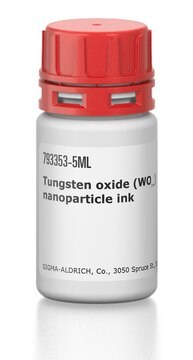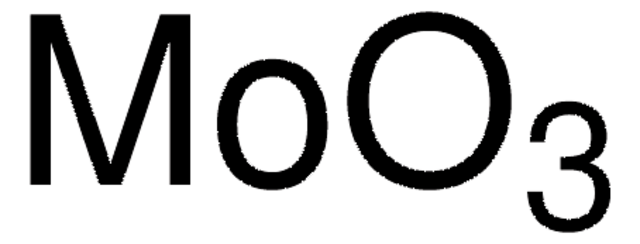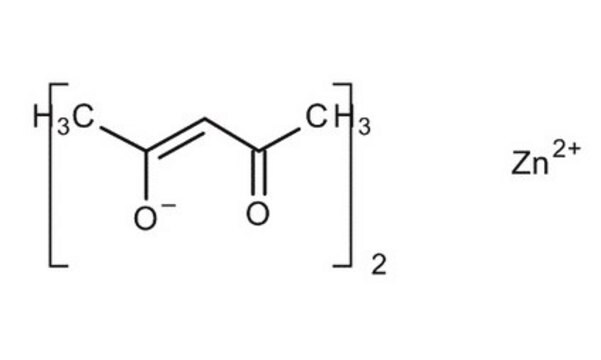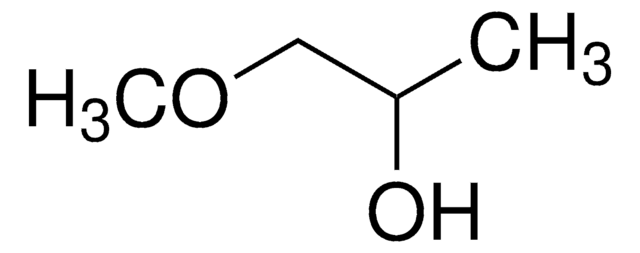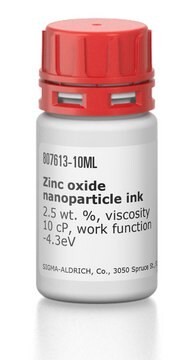900151
Molybdenum oxide nanoparticle ink
Synonym(s):
MoO3 Dispersion, MoO3 ink, MoO3 nanoparticle ink, MoO3 suspension
About This Item
Recommended Products
form
dispersion
Quality Level
composition
Solid content, 2.3-2.7 wt. % (crystalline MoO3 in ethanol)
greener alternative product characteristics
Design for Energy Efficiency
Learn more about the Principles of Green Chemistry.
particle size
10-40 nm
viscosity
1-3 cP
greener alternative category
, Enabling
Related Categories
General description
Application
Caution
- Store in a dark at room temperature.
- Prior to application: shake then ultrasonicate with sonic horn and (optionally) filter through 0.45 μm PTFE filter.
- Post-treatment: use plasma cleaning of dry films for removal of organic dispersant.
Legal Information
Signal Word
Danger
Hazard Statements
Precautionary Statements
Hazard Classifications
Carc. 2 - Eye Irrit. 2 - Flam. Liq. 2
Storage Class Code
3 - Flammable liquids
WGK
WGK 2
Flash Point(F)
57.2 °F
Flash Point(C)
14 °C
Certificates of Analysis (COA)
Search for Certificates of Analysis (COA) by entering the products Lot/Batch Number. Lot and Batch Numbers can be found on a product’s label following the words ‘Lot’ or ‘Batch’.
Already Own This Product?
Find documentation for the products that you have recently purchased in the Document Library.
Customers Also Viewed
Articles
Professor Shinar (Iowa State University, USA) summarizes the developments of a variety of sensor configurations based on organic and hybrid electronics, as low-cost, disposable, non-invasive, wearable bioelectronics for healthcare.
Professor Tokito and Professor Takeda share their new materials, device architecture design principles, and performance optimization protocols for printed and solution-processed, low-cost, highly flexible, organic electronic devices.
Recent progress in the area of solution-processed functional materials has led to the development of a variety of thin-film optoelectronic devices with significant promise in the industrial and consumer electronics fields.
Our team of scientists has experience in all areas of research including Life Science, Material Science, Chemical Synthesis, Chromatography, Analytical and many others.
Contact Technical Service